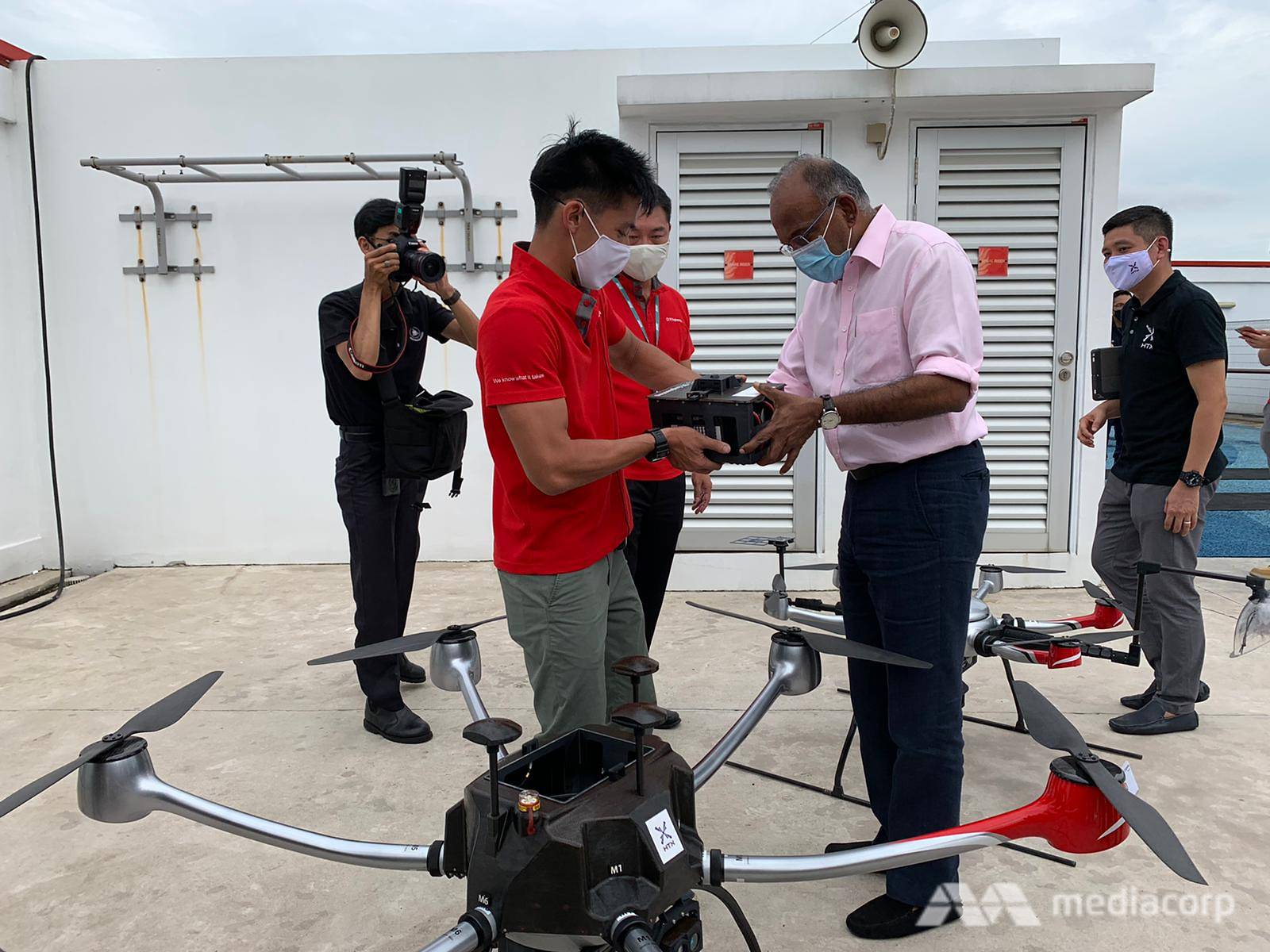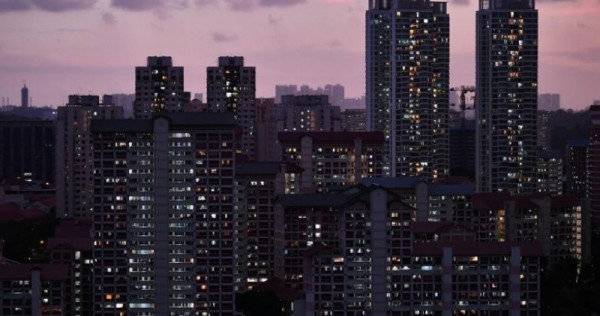SINGAPORE: More “smart” thermal scanners for mass screening may soon be deployed across Singapore, helping to minimise congestion at popular venues while providing quick and accurate temperature readings.
This software also enables thermal scanners to screen up to 10 people at any one time and identify those who are not wearing masks, said the Government Technology Agency (GovTech) on Thursday (Sep 17).
To meet public demand for an affordable, accurate and effective automated temperature screening solution, GovTech said it has licensed the software for its SPOTON smart thermal scanner to four Singapore-based distributors.
READ: Digital venues and virtual booths: How hybrid MICE events can be piloted
The distributors will be tasked with commercialising and scaling the thermal scanning systems. The companies comprise three small- and medium-sized enterprises – ADERA Global, Scanmed Technology and SmartScan Machine – and a non-profit organisation, Extra.Ordinary People.
The SPOTON smart thermal scanner was first developed by GovTech’s Smart Nation Platform Solutions team in February. SPOTON’s deep learning-based software was integrated with low-cost off-the-shelf hardware to develop a cost-effective temperature screening solution, said GovTech.
A thermal scanner using software developed by GovTech can screen up to 10 people at a time.
The smart thermal scanner, which can work both indoors and outdoors, has an accuracy of between 0.3 and 0.5 degrees Celsius within a 1.5m to 2m range.
When an individual’s temperature exceeds a pre-defined threshold of 37.5 degrees Celsius, SPOTON will trigger an alarm and send an email alert to the venue operator. The person will be colour-coded as “red” on the SPOTON display and a snapshot will automatically be taken and saved.
The SPOTON scanner system is compact enough to be mounted on a tripod or laptop.
READ: STB will start accepting applications to hold business events for up to 250 people from Oct 1
GovTech first trialled SPOTON at NTUC Club’s Eat Box Event in February, which was attended by 32,000 people over two weekends.
Since April, GovTech has worked with government agencies to deploy 50 units of SPOTON at various locations including the Supreme Court, Ministry of Education headquarters, Our Tampines Hub, Changi Exhibition Centre community isolation facility, Housing Board branch offices and mosques.
A thermal scanner using software developed by GovTech can screen up to 10 people at a time.
Under the licensing agreement for the software, GovTech will provide the SPOTON version 1.0 software for free, and provide training and technical support to the four distributors.
The distributors will then purchase the necessary hardware according to GovTech’s specifications, hire their own staff members to assemble the thermal scanners and provide after-sales support to their customers. They are also allowed to set their own selling prices.
Extra.Ordinary People said it has committed to providing work to individuals from lower-income groups and those with special needs, and will train them to assemble SPOTON thermal scanners.
READ: TraceTogether tokens to be issued to Singapore residents; some SafeEntry points will require visitors to use TraceTogether to check in
Smart Nation Platform Solutions senior director, Lim Chinn Hwa said GovTech decided to license the SPOTON software to private and non-profit companies in order to commercialise and scale to meet existing urgent demand.
“In doing so, we also hope to grow the capabilities of our SMEs, foster a more vibrant local ICT industry and at the same time, strengthen public-private sector partnerships to collectively keep citizens safe from COVID-19.”
GovTech said it will also consider extending the SPOTON version 1.0 software licence to other companies interested in distributing the thermal scanners. Interested companies may email sensors@tech.gov.sg.
READ: Low community prevalence of COVID-19, 0.03% of people with acute respiratory infection test positive: Gan Kim Yong
Group CEO of Adera Global, Anthony Ong said that as Singapore slowly opens up, the demand from the market will be focused on mass detection.
Although there are some mass scanning devices already in use, Mr Ong said he anticipates that SPOTON will be “very highly sought after” due to its superior features.
GovTech said it is currently working on a second version of the SPOTON software that will include more advanced features such as pose recognition, heart rate and oxygen saturation measurements. This version is expected to be ready in the first quarter of next year.
BOOKMARK THIS: Our comprehensive coverage of the coronavirus outbreak and its developments
Download our app or subscribe to our Telegram channel for the latest updates on the coronavirus outbreak: https://cna.asia/telegram









